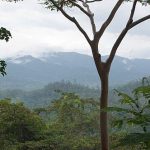 Animals
Animals  Animals
Animals  History
History 10 Most Influential Protests in Modern History
 Creepy
Creepy 10 More Representations of Death from Myth, Legend, and Folktale
 Technology
Technology 10 Scientific Breakthroughs of 2025 That’ll Change Everything
 Our World
Our World 10 Ways Icelandic Culture Makes Other Countries Look Boring
 Misconceptions
Misconceptions 10 Common Misconceptions About the Victorian Era
 Mysteries
Mysteries 10 Strange Unexplained Mysteries of 2025
 Miscellaneous
Miscellaneous 10 of History’s Most Bell-Ringing Finishing Moves
 History
History 10 Great Escapes That Ended Right Back in Captivity
 Weird Stuff
Weird Stuff 10 Fascinating Things You Might Not Know About Spiders
 Animals
Animals 10 Animals That Humiliated and Harmed Historical Leaders
 History
History 10 Most Influential Protests in Modern History
 Creepy
Creepy 10 More Representations of Death from Myth, Legend, and Folktale
Who's Behind Listverse?

Jamie Frater
Head Editor
Jamie founded Listverse due to an insatiable desire to share fascinating, obscure, and bizarre facts. He has been a guest speaker on numerous national radio and television stations and is a five time published author.
More About Us Technology
Technology 10 Scientific Breakthroughs of 2025 That’ll Change Everything
 Our World
Our World 10 Ways Icelandic Culture Makes Other Countries Look Boring
 Misconceptions
Misconceptions 10 Common Misconceptions About the Victorian Era
 Mysteries
Mysteries 10 Strange Unexplained Mysteries of 2025
 Miscellaneous
Miscellaneous 10 of History’s Most Bell-Ringing Finishing Moves
 History
History 10 Great Escapes That Ended Right Back in Captivity
 Weird Stuff
Weird Stuff 10 Fascinating Things You Might Not Know About Spiders
10 Scientists Convicted of Serious Crimes
“Follow the science” and “trust the science” have become mantras of late. Science is, after all, typically regarded as being unbiased, producing reliable knowledge based on empirical methods that are independent of sociopolitical and economic influences, falsifiable, and replicable. The problem is that science’s accuracy and reliability depend on the ethics of the scientists who conduct it, and not all scientists are ethical. They also make mistakes.
Some have, in fact, even committed serious crimes. Unfairly, perhaps, in some cases, the ten scientists on this list were seen as having broken the public’s trust and were convicted of serious criminal offenses that gave science a black eye, often while destroying their own reputations and careers.
Related: 10 Hardened Criminals Who Helped Solve Crimes
10 Annie Dookhan
Annie Dookhan, once lauded for her astonishing productivity in the Massachusetts crime lab, gained notoriety as the chemist whose shortcuts and falsified test results shattered public trust in forensic science. She claimed to process samples at a rate far exceeding her peers, which raised eyebrows and earned her a reputation as a star employee. The truth was far more disturbing: Dookhan frequently skipped proper testing protocols, sometimes fabricating results or manipulating samples to match prosecution expectations.
Her misconduct had sweeping consequences. More than 40,000 criminal convictions were called into question, and Massachusetts courts were eventually forced to dismiss over 21,000 cases. Dookhan was charged with obstruction of justice, tampering with evidence, and perjury—having lied about holding a master’s degree. She received a five-year prison sentence but served only three. The state paid out millions in restitution to wrongfully convicted individuals, and the scandal triggered a major overhaul of forensic procedures in the state.[1]
9 Xiaorong You
Xiaorong You, a chemist with a Ph.D., found herself at the center of a sweeping espionage and intellectual property theft case involving beverage can technology. While working for industry giants like Coca-Cola and Eastman Chemical Company, she gained access to a proprietary BPA-free coating process—a development valued at over $120 million. Rather than safeguarding the information, she copied it with the intent of benefiting a Chinese company and, ultimately, the Chinese government.
Her actions didn’t go unnoticed. After a lengthy investigation, You was convicted of conspiracy to commit economic espionage and trade secret theft, along with related charges like wire fraud and unauthorized possession of proprietary data. She was sentenced to 14 years in prison, a stark reminder of the high stakes in the global competition over scientific innovation.[2]
8 Jason Edmonds

Jason Edmonds, a research biologist working with the U.S. Army, abused his government position for personal gain in a bribery scheme highlighting corruption within federal scientific research. Over a period of several years, Edmonds accepted over $111,000 in bribes and other perks from the CEO of a private company, EISCO. In exchange, he helped secure federal contracts for the company and misused his authority in grant administration.
The bribes funded his real estate ventures and property renovations, and the scheme eventually unraveled under federal investigation. Edmonds was sentenced to 51 months in prison and ordered to forfeit the full amount he received in bribes. The case served as a sobering example of how conflicts of interest and greed can compromise the integrity of government research programs.[3]
7 Richard Kazmaie
Dr. Richard Kazmaie, a biology professor at West Texas A&M University, made headlines not for his academic achievements but for illegal trafficking in protected wildlife parts. Over time, he imported nearly 360 specimens—including skulls, skeletons, and taxidermy mounts—without obtaining the required permits. These items, sourced from Europe, Asia, Africa, and North America, were typically purchased through online platforms like eBay.
Although Kazmaie did not traffic live animals, his violations still constituted serious breaches of the law under the Convention on International Trade in Endangered Species. The total market value of the smuggled items was over $14,000. Kazmaie was sentenced to six months in prison for his crimes and fined $5,000. The case highlighted how even academic curiosity can spiral into illegal activity when ethical lines are ignored.[4]
6 Thomas Butler
In 2003, Dr. Thomas Butler, a microbiologist and physician at Texas Tech University, triggered a biosecurity scare after announcing that 30 vials of plague bacteria had gone missing from his lab. The incident sparked national headlines and prompted fears of a bioterrorism threat. Butler’s shifting explanations—first that he had accidentally destroyed the samples and later, that he didn’t know where they were—only deepened the concern.
While only one of the charges against him was directly related to the plague samples, investigators uncovered a broader pattern of misconduct. Butler was convicted on 47 out of 69 counts, including improper handling of biohazardous materials and fraud. He was sentenced to two years in prison, fined $15,000, and ordered to repay over $38,000 to Texas Tech, which he eventually reimbursed to the tune of $250,000. He also lost his medical license. Despite multiple appeals, the Supreme Court declined to review his case, closing the chapter on one of the most high-profile biomedical scandals in recent memory.[5]
5 Hector Cabrera Fuentes
Hector Cabrera Fuentes, a prominent Mexican biochemist and cardiovascular researcher, stunned the scientific world in 2022 when he admitted to spying for Russia. His mission, orchestrated by Russian intelligence operatives, involved tracking the whereabouts of a U.S. government informant and attempting to infiltrate American networks. Fuentes failed to report his actions to U.S. authorities, a legal requirement under the Foreign Agents Registration Act.
Convicted of acting on behalf of a foreign government, Fuentes narrowly avoided the maximum ten-year prison sentence, instead receiving four years. Prosecutors emphasized that his behavior mirrored known Russian espionage tactics, including asset recruitment and covert surveillance. Upon completing his sentence, Fuentes will be deported to Mexico. His case was a chilling reminder of the geopolitical undercurrents that sometimes sweep even respected scientists into dangerous waters.[6]
4 Nika Larsen

As a forensic scientist with the Oregon State Police, Nika Larsen had direct access to a vast inventory of controlled substances—access she exploited with alarming frequency. Over time, she siphoned off hundreds of pills, including oxycodone, methadone, hydrocodone, and methamphetamine, from over 50 pieces of evidence. She manipulated records and falsified logs to cover her tracks, all while continuing to work on criminal cases that relied on the very evidence she had compromised.
Her thefts jeopardized numerous investigations and eroded confidence in the justice system. Larsen was convicted of acquiring controlled substances through fraud and misrepresentation and sentenced to three years in prison, followed by 250 hours of community service. Her actions not only endangered her career but also undermined the credibility of forensic science in the state.[7]
3 Charles Harvey Eccleston

Charles Harvey Eccleston, a former nuclear scientist with the U.S. government, turned against his former employer in spectacular fashion. Motivated by resentment toward the Nuclear Regulatory Commission, he concocted a plan to sell sensitive information and access to U.S. Department of Energy computers to foreign powers. His goal was either to enable the theft of nuclear secrets or to deploy malware that could disable critical infrastructure.
Eccleston attempted to broker the deal while living in the Philippines, where he met with undercover FBI agents posing as foreign operatives. Expecting a payday of $80,000, he was instead arrested and deported to the United States. He later pleaded guilty to attempting to damage protected computer systems and was sentenced to 18 months in prison. He also had to forfeit $9,000—the amount he’d received during the FBI sting.[8]
2 He Jiankui
Chinese biophysicist He Jiankui became infamous in 2018 after revealing that he had used gene-editing technology to alter the embryos of twin girls, dubbed “Lulu” and “Nana,” in an attempt to make them resistant to HIV. His announcement stunned the global scientific community, not just for its ethical implications but also for the secrecy and questionable methods involved. Despite holding advanced degrees from Rice and Stanford, He was not a licensed physician and lacked the oversight typically required for such experiments.
He was convicted of conducting illegal medical practices and sentenced to three years in prison. While serving his sentence, He announced plans to pivot to developing therapies for Duchenne muscular dystrophy, claiming tens of thousands of patients had contacted him. Critics argue that his gene editing may have introduced unintended consequences, possibly endangering the health and longevity of the children involved. His experiments have been labeled by some as reckless or even monstrous, sparking global debates on the future of human genetic engineering.[9]
1 Six Seismologists
In one of the most controversial science-related court cases of the 21st century, six Italian seismologists and a government official were convicted of manslaughter for failing to adequately warn the public before a 2009 earthquake in L’Aquila that killed 309 people. The scientists, who worked for the Italian National Institute of Geophysics and Volcanology, had issued public statements suggesting that a major quake was unlikely despite increasing seismic activity in the region.
Judge Marco Billi ruled that their analysis was superficial and contradictory and that their false assurances contributed directly to the deaths of residents who stayed in their homes. The defendants were sentenced to six years in prison, fined €7.8 million, and banned from holding public office. Scientists around the world criticized the ruling, warning that it set a dangerous precedent for holding experts criminally liable for the unpredictability of natural disasters.
Eventually, the convictions were overturned. The Italian court of appeals acquitted the scientists, acknowledging that while their communication may have been flawed, predicting earthquakes with certainty is scientifically impossible. The government official’s sentence was reduced to two years, and the case served as a sobering lesson in the limits of scientific certainty and the need for cautious public messaging.[10]








